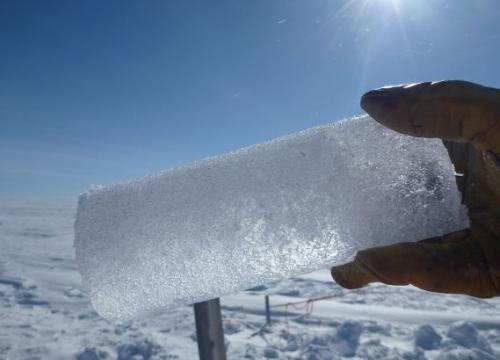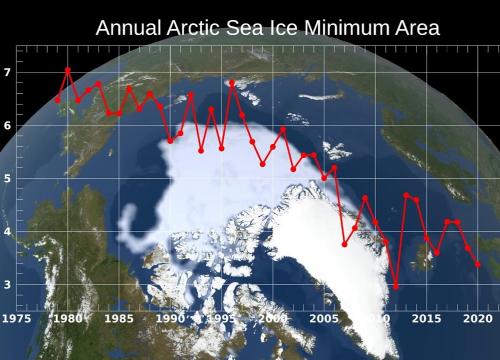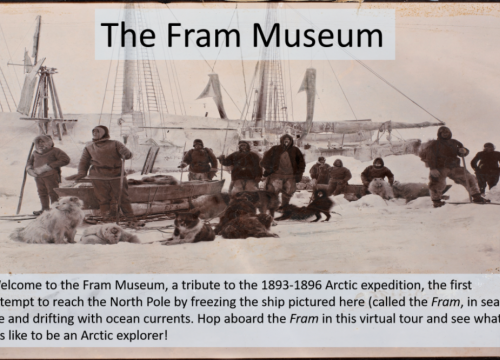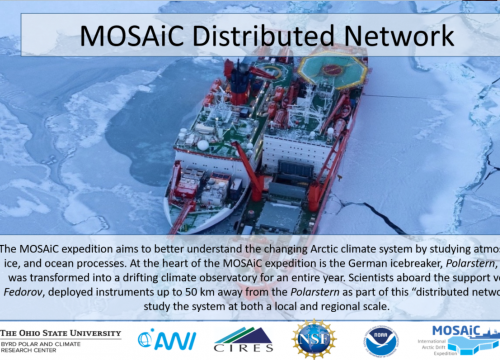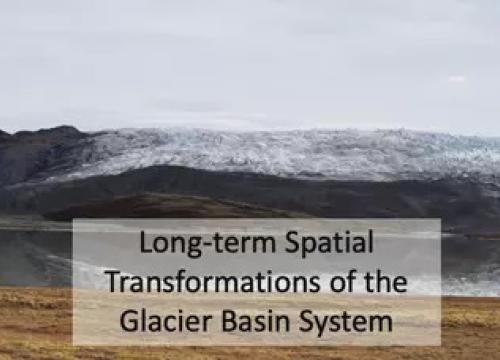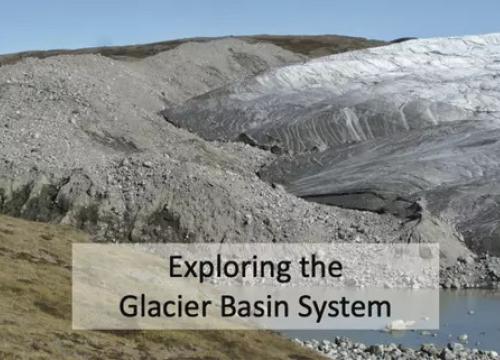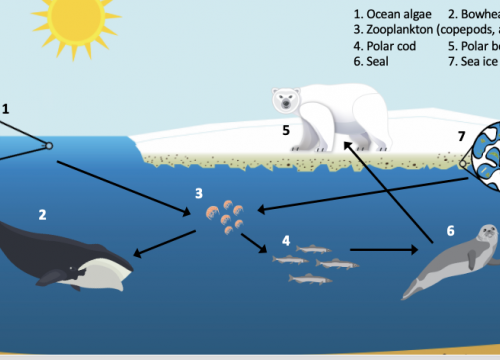What makes the Arctic climate system so unique is the sea ice, which influences the Arctic climate in many ways. In this Data Puzzle, students analyze authentic Arctic data to construct explanatory models for the following question, "What effect, if any, do leads (cracks in the sea ice) have on the transfer of moisture between the Arctic Ocean and atmosphere?"
Why does this matter? The amount of moisture in the atmosphere impacts the formation of clouds. Clouds are an important part of the Arctic climate system as they have the ability to reflect incoming sunlight in the summer (Arctic winter is dark 24 hours a day), which can keep temperatures cool. However, they can also contribute to surface warming by absorbing and reemiting heat released by the Earth back to the surface. Cloud cover is least extensive during the winter months, when sea ice covers much of the Arctic and prevents the transfer of moisture between the ocean and atmosphere. But as global temperatures rise, the number of leads in the winter is expected to increase. More leads may allow for more moisture to be transferred from the ocean to the atmosphere, which may increase cloud cover…it’s all connected!
Context for Use
This Data Puzzle is part of a larger collection of Data Puzzle resources that combine classroom-friendly datasets with Ambitious Science Teaching practices to help students make sense of phenomena!
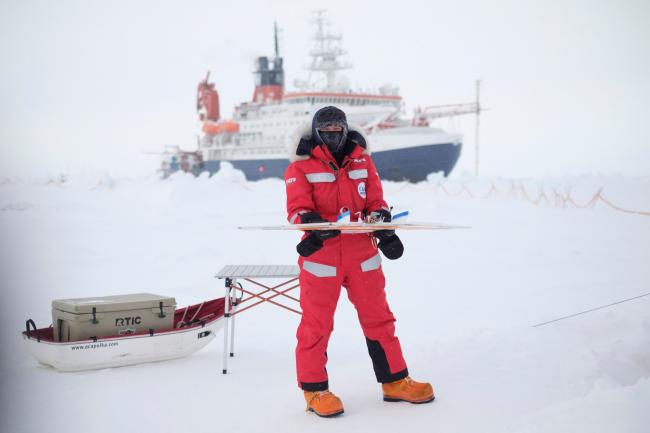
Atmospheric scientist Gina Jozef running through the pre-flight routine with her drone, the "DataHawk" during the 2019-2020 MOSAiC Arctic research expedition. Photo by Calle Schonning.
Goals Header
What Students Will Do
- Analyze and interpret Arctic humidity data to evaluate the effect of cracks (change) in sea ice on the Arctic system.
- Construct conceptual models to explain how cracks in sea ice are affecting the transfer (change) of moisture between the Arctic ocean and atmosphere.
Teaching Materials
Description
Days 1-2
Part 1 (30 minutes) Eliciting Students' Ideas
- Students work collaboratively to observe and explain the opening scenario prompt, why does removing a hat cause the runner's head to produce steam on a cold winter day.
Part 2 (50 minutes) Identifying Important Science Ideas
- Students engage with an interactive reading to 1) identify similarities between the opening scenario prompt and the work of Gina Jozef, an atmospheric scientist and drone pilot who studies the transfer of moisture between the Arctic Ocean and atmosphere to better understand the changing Arctic energy budget, and 2) make a prediction as it relates to Gina Jozef's research question, "What effect, if any, do leads (cracks in sea ice) have on the transfer of moisture between the Arctic Ocean and atmosphere?"
Part 3 (40 minutes) Supporting Ongoing Changes in Thinking
- Students test their prediction about how leads impact the transfer of moisture between the Arctic ocean and atmosphere by analyzing humidity data capture by Gina's drone upwind, downwind, and over an Arctic sea ice lead (crack) at various altitudes.
Day 3
Part 4 (60 minutes) Constructing Evidence-Based Explanations
- Students reflect on evidence gathered during parts 1-3 and construct a final explanatory model for the question, "What effect, if any, do leads (cracks in sea ice) have on the transfer of moisture between the Arctic Ocean and atmosphere?"


